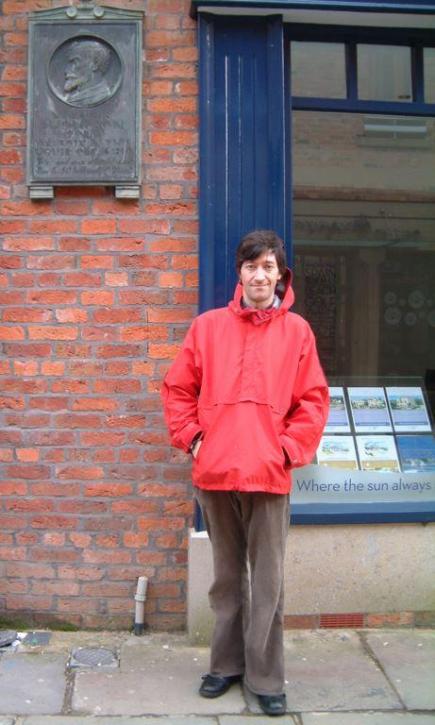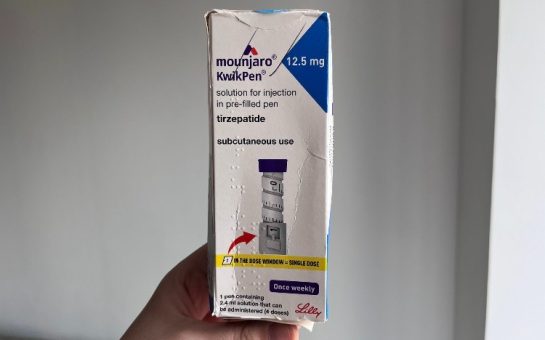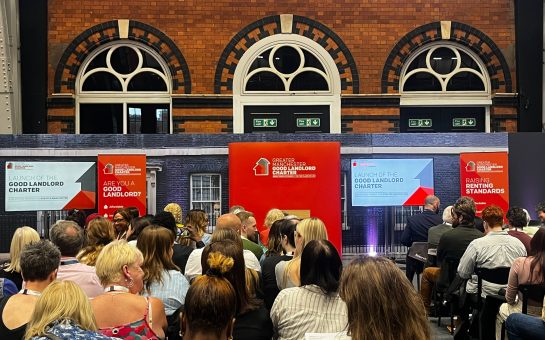The true identity of Jack the Ripper may have been uncovered by an author who claims the killer was a renowned poet who grew up in Manchester.
The author claims that Victorian poet Francis Thompson was responsible for the brutal murders of five women in East London.
In ‘Francis Thompson – A Ripper Suspect’ Richard Patterson claims that Thompson’s childhood in Ashton-Under-Lyne contributed to the mental state of the man whose crimes would grip the nation.
Richard has spent nearly two decades investigating the case in an attempt to prove that the poet was the killer.
Born in 1859 into a deeply religious Catholic family in Preston, Thompson moved to Ashton in 1864 when his father opened a surgery on Stamford Street.
“In contrast to Preston, the catholic community was much smaller,” Richard told MM.
“This was during a time when the majority of Anglicans distrusted Catholics,” said the 46-year-old author from Melbourne.

RESEARCH: Richard outside Francis Thompson’s place of birth
In 1868, when Thompson was nine years old, a full-scale anti-Catholic riot broke out.
Organised by William Murphy, a staunch anti-Catholic, the riot saw houses broken into, people killed and the Catholic church of St Anne on Cavendish Street was destroyed.
“Thompson witnessed these riots, and they left a lasting impression,” said Richard.
“Much of his distrust of non-Catholics, his secretiveness and his paranoia stemmed from this riot,” he added.
Thompson left Manchester for London in 1885, with the aim of becoming a writer.
His first years in London brought little more than misery, however, and he spent a long time living on the streets.
Good fortune found him in 1888, when he first had work published by an editor who rescued him from homelessness.
From here, Thompson went on to gain a reputation as one of the most esteemed poets of his generation.
He died in London in 1907 from a combination of tuberculosis and long-term opium abuse.
At least that’s history’s version of events.
The reality, the book says, is that Thompson had a dark side that some people went to great lengths to keep quiet.
The idea for the book was born in 1997 when Richard decided to study the Jack the Ripper murders for a dissertation on criminology.
At the same time as researching the murders, he happened to buy a book of Francis Thompson’s poems.
“After reading one of his poems I said to myself that he might be Jack the Ripper,” said Richard.
“I started researching his life, and once I saw that in the same year as the Ripper murders, that he was in London, living as a vagrant, my interest grew.
“As I continued to research Thompson, I decided that there were enough correlations between him and the crimes, to put into a book.”
While many names have been touted as the true identity of Jack the Ripper over the years, Richard believes the evidence for these suspects is mostly based on assumptions.
“Although interesting stories in themselves, they lack what I feel professional investigators would look for in the murderer, these being motive, opportunity, ability, and weapon.
“Out of the other suspects and there are more than a thousand named so far, Francis Thompson is the one who fits these the most closely.
“His motive is simple – a prostitute dumped him, soon before the murders began and all the victims were prostitutes.”
The book claims that in 1887, whilst struggling for work, Thompson was taken in by an unnamed prostitute in Chelsea, and that the two briefly became lovers before separating for reasons that aren’t fully known.
One thing that isn’t a mystery, however, is that Thompson was left very jilted by the situation.
“He lived closer to the victims than any other suspect and he lived less than 100 yards from Mary Kelly, the final victim, on the night she was killed,” Richard told MM.
“He lived in or near the areas of the all the murders.”
Again, it appears that Thompson’s experiences in Manchester contributed to the Whitechapel murders, as the book also reveals he trained as a surgeon at Owens Medical College (now the University of Manchester).
“He even paid extra fees just so he could practice dissecting a hundred cadavers,” said Richard, describing how Thompson was taught the most cutting-edge dissection techniques.
This supports the idea that Jack The Ripper was said to great knowledge of anatomy, owing to the precise, almost-surgical way that his victims had been stabbed.
Richard described this discovery, as well as realizing that he lived incredibly close to one of the murder scenes, as ‘eureka’ moments.
“When I found out that he lived at Providence Row night refuge during the murders, it also excited me,” he said.
“This refuge is located in Crispin Street, Spitalfields, it sits at the end of Dorset Street, which is the street that Mary Kelly, the last Ripper victim was killed in.
“Francis Thompson could have actually looked down from the window of the room, and seen the archway of the passage that led to Mary Kelly’s bedroom.
“Just these basic points, without considering that he also wrote about killing prostitutes before and after the murders, is enough to propel him to the top of the list of suspects.”
Indeed, a look at Francis Thompson’s poetry reveals an unhinged mind, a result of battles with homelessness, destitution and drug addiction.
Nightmare of the Witch Babies, written prior to the murders, in 1886, describes in gory detail a man hunting down prostitutes and ripping their stomachs open with a knife:
Swiftly he followed her
Ha! Ha!
Eagerly he followed her.
Ho! Ho!
Lo, she corrupted!
Ho! Ho!
And its paunch [stomach] was rent [ripped]
Like a brasten [bursting] drum;
And the blubbered fat
From its belly doth come
It was a stream ran bloodily under the wall.
O Stream, you cannot run too red!
Under the wall.
With a sickening ooze – Hell made it so!
Two witch-babies, ho! ho! ho!’
It would also be hard to consider it a coincidence that in 1889, one year after the Jack The Ripper murders, Thompson completed a story called Finit Coronat Opus (The End Crowning Work).
It is a story about a poet who kills a woman with a knife in order to become famous.
The revelry with which Thompson writes about gruesome deaths could be put down to his drug use, as with many poets and artists of the time.
A photograph of Whitechapel High St just two years after Jack the Ripper’s heinous crimes… https://t.co/pt2vH3medG pic.twitter.com/5U0jJel8p5
— The Ripper (@The_East_End) March 29, 2016
But Richard argues that his prose is also based on an amalgamation of mental scarring, built up after years of issues such as the early deaths of family members including his infant sister when he was just five, his years of solitude and the public shunning he and his family faced during his time as a Catholic in Manchester.
Despite apparent evidence, the question remains, why was Francis Thompson never considered a suspect before?
Richard’s answer is simple: there has been a cover-up.
The author claims that Thompson’s antics were painstakingly removed from the public domain in order to promote the image of a well-mannered, respectable writer.
“The editor who took Thompson off the streets just after the final Ripper murder, saw Thompson’s potential as a writer and a poet,” said Richard.
“That he studied as a doctor and that he was a drug addict and that he had a sexual relationship with a prostitute, were carefully removed from his public profile.
“Certain alterations, like the fact that he stayed at Providence Row so close to the murders, were removed from later editions of his work and his official biographies, point to a conspiracy involving very few people.”
In truth, the anonymity of Jack The Ripper is arguably the largest asset to his infamy, as well as the rose-tinted glasses many people look at the era through.
“Much of the captivation lies in our romantic notions of the Victorians,” said Richard.
“The London smog, gas lamps, horse-led carriages, and the pageantry and splendor of the British Empire are associated with Jack the Ripper.
“The sexual underpinnings of prostitutes being murdered must also play a part in our attraction to these crimes.
“London, in 1888, was effectively the centre of the world.
“England at that time was the largest empire the Earth had ever seen, and has yet to have seen again.
“That one man could essentially hold this city to ransom through a reign of terror, the Ripper may have been the first terrorist, is something we are still not fully cognizant of.
“We have never seen anything quite like it before and I pray we never see anything like it again,” he added.
‘Francis Thompson – A Ripper Suspect’ is available to buy now.
Main image courtesy of New York Daily News, via YouTube, with thanks.



